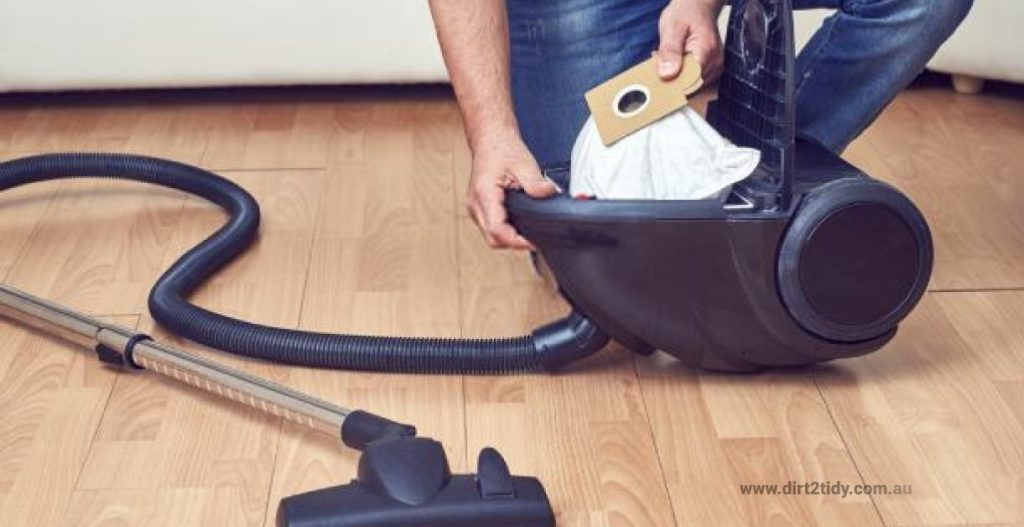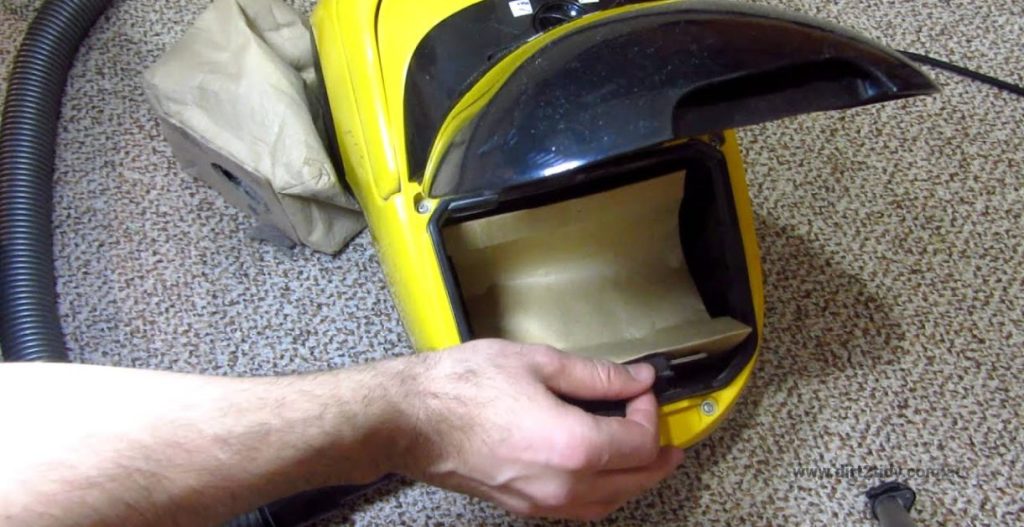Table of Contents
The vacuum cleaner is generally the dirtiest appliance in the house. After cleaning, you may not feel like giving the vacuum some time to clean. A clean, well-maintained vacuum will take up dirt better and last longer as manufactures recommend.
Keeping the filter clean and free from blockages is key to both the longevity and performance of your vacuum cleaner. When filters become clogged, suction drops and your vacuum struggles to pick up dirt and debris effectively. You might notice it’s not working as well as usual, or even catch a whiff of something unpleasant—both signs your filter is overdue for attention.
Think of it like this: a clean filter is to your vacuum what clean lungs are to you. If dust and debris build up, it forces the motor to work harder, which can strain the machine and shorten its lifespan. Regularly cleaning or replacing the filter not only ensures your vacuum tackles dirt and pet hair with gusto, but also helps keep your home fresher and your appliance running smoothly.
We’ll teach how to clean the bin and machine, change the filters, and remove clogs and tangled hair and extend the life of your vacuum cleaner.
Begin
Before cleaning your vacuum filters, read the manual. These will demonstrate how to replace dirty filters and which parts are safe to wash and completely dry.
Why Cleaning Your Vacuum Filter Matters
Neglecting your vacuum filter can quickly lead to trouble. When filters get clogged with dust and debris, you’ll notice your vacuum working harder—but doing less. Loss of suction is usually the first giveaway, and persistent odors aren’t far behind. Think of the filter as your vacuum’s lungs: if it can’t breathe, it can’t clean.
What’s more, a dirty filter means the internal parts have to work overtime, putting unnecessary strain on the motor. Over time, this extra stress wears down the machine and can cut its lifespan short. Nobody wants to buy a new vacuum sooner than necessary because of a fixable issue!
In short, keeping your filter clean isn’t just about effective cleaning—it’s also about protecting your vacuum and avoiding unexpected repair bills. If you notice your vacuum struggling or smelling musty, it’s time for some TLC.
Cleaning Your Vacuum
- Having these products will assist you clean your vacuum.
- Wiping cloth and clean foam.
- For untangling hair and threads, use scissors, a seam ripper, or a tiny knife.
- Brush (such as an old dishwashing brush or toothbrush).
- Vacuum cleaner sink.
- Sanitizer (such as isopropyl alcohol).
- Broom handle for unclogging hoses.
- A second vacuum with suction power is helpful for air dry.
Below is a suggested schedule for maintenance tasks. When your vacuum loses suction, stinks, or looks a mess, fix it.1
How to Keep Your Vacuum Smelling Fresh
If you’re hoping to freshen the air in your home while you vacuum, here’s a simple trick: add a few drops of your favorite essential oil directly onto the foam filter after it’s been cleaned and dried. Scents like tea tree, peppermint, lemongrass, or eucalyptus work especially well—not just for their freshness, but also because they bring some natural antibacterial power along for the ride.
Every time you vacuum after treating your filter, a subtle, pleasant fragrance will be released into the room. Just make sure the filter is completely dry before reinstalling it to prevent mildew. This easy step keeps your vacuum from blowing dusty, musty aromas around and gives your cleaned surfaces an instant pick-me-up.
Regularly refreshing your filter with essential oils is an easy way to keep your vacuum—and your home—smelling a bit more inviting.

Vacuum roller head tangles
- Cut tangled hair and threads from the roller head. Usually, a floor head’s brush roller may be removed for cleaning. Each vacuum’s instructions vary.
- Cut any knotted hair or threads with scissors, a thread ripper, or a tiny knife. Avoid cutting yourself or the roller bristles.
- Brush off dust, lint, and hair from the roller head and bristles. If the roller is unclean, you may wash it under the faucet. Dry it before reinstalling.
- Check the cleaning head for clogs.
- If you removed the roller, reinstall it properly.
- Multi-floor cleaning heads may have a hard floor option that reduces the bristle edge. Lower and clean these.
- Quickly clean the head by disconnecting it and using the wand to remove lint and dust. A portable vacuum can help with some of these duties. Legos, paper, buttons, and hair clips may clog a hose. Blockages in hoses are normally obvious, but they can build up over time.
- Disconnect the hose and shake it to see if anything rattles or falls out. Check each end for noticeable obstructions and use a broom handle to push out clogs.
Monthly vacuuming
- Check the handbook or manufacturer website for instructions on removing and washing any type of filters.
- Exhaust filter removal Clean and change the filter yearly. If feasible, brush dust from washable filters and wash them under a faucet or with warm water.
- Between the bag/bin and motor, most vacuums feature a pre-motor filter. This filters bag or bin air to prevent motor dust. They may also feature a HEPA filter for the motor’s exhaust air to ensure no fine particles escape into the home’s air.
- Pre-motor cartridge filters are coarse and may be brushed off and cleaned with warm water. Dry them before putting them back in the vacuum. HEPA filters can be brushed or shook to remove dust, but not cleaned. Check the handbook for washing instructions. Important: Avoid washing or scrubbing HEPA filters. These filters are made of tightly woven fibers that trap even the tiniest particles—scrubbing or getting them wet can damage the fibers and reduce their effectiveness. When you notice your HEPA filter is dirty and brushing or shaking it out no longer helps, it’s time to invest in a new one. Always follow the manufacturer’s recommendations for filter care to keep your vacuum running efficiently.Wipe vacuum’s exterior using a moist cloth.
Reusable disc filters
If your vacuum uses reusable disc filters—often resembling those used in some coffee makers—these need a bit of regular attention for optimal performance. First, remove the filter according to your vacuum’s instructions, as they may be secured with a holder or mounting plate.
Rinse the disc filter gently under running water to remove trapped dust and debris. Avoid scrubbing too hard to prevent damage. Let the filter air dry completely before reinstalling it; moisture left behind can cause musty odors or even mold. Regularly cleaning these filters ensures strong airflow and keeps your vacuum running smoothly.
Remember, most household vacuums don’t use this filter type, but you might spot them in heavy-duty or workshop models. If in doubt, always check your manual for specific care instructions.

Bag replacement
When the bag is two-thirds filled, replace it. Leaving it full reduces suction and vacuum performance. Too much dirt in a bag might lead to mold and bacteria.
While replacing the bag, wipe the compartment with a moist cloth or use a second vacuum cleaner – a brush accessory is ideal. Before putting in a fresh bag and closing the compartment, be sure it’s dry.
Replace clogged filters
Check the instructions for timing. If the filters seem clean and you’re not having suction or dust/odor issues, you may not need to do this.
Bagged vacuums:
- Filters generally come with new bags.
- Replace filters as directed.
- If in doubt, replace the filters after installing the final bag.
- Check the instructions or manufacturer website for replacement filter types. Online or in-store ordering is common.
If bagless:
Cleaning a foam filter dustbin.
- Warm water is preferable.
- If the hose, wand, and accessory heads are unclean, you may wash them.
- Dry all vacuum cleaner parts before reassembling.
Parts replacement
- Replace worn parts including the hose, roller drive belt, and accessories to improve the life of your vacuum.
- Check the parts list or manufacturer’s website. New components can be ordered from the manufacturer or other merchants.

Does Your Vacuum Require Disinfecting?
Where there’s dirt, there’s typically pathogens. The underside of a bagless vacuum’s cleaning head and dust bin should be disinfected occasionally. This is especially true if you have small children or dogs, who may track dirt around the house. Disinfection is especially vital for ill family members.
Always consult the handbook. Some manufactures advocate merely using water or a moist towel to clean the vacuum. Isopropyl alcohol is an excellent and quick-drying disinfectant, although any household liquid or spray can be used. Don’t get disinfectant in the motor.
If a disinfectant isn’t advised or you’re unsure, a thorough wipe with a towel can eradicate bacteria. Make sure the vacuum is dry before reassembling.

